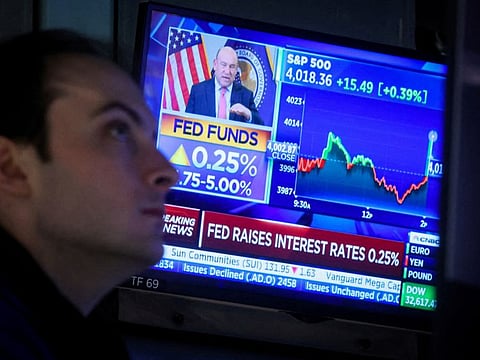Fed traders boost bets on May rate hike as unemployment falls
The 2-year Treasury yield surged as much as 12 basis points to 3.96%

New York: Bond market expectations for a Federal Reserve interest-rate hike in May increased after the release of a stronger-than-anticipated US jobs report.
Short-end Treasury yields leaped higher as the amount of extra policy tightening priced by the swaps market in for the next Federal Open Market Committee gathering was relatively steady was boosted to around 19 basis points from the current effective fed funds rate of 4.83 per cent. That suggests close to a three-in-four chance that officials will bolster the benchmark by a quarter point.
The 2-year Treasury yield surged as much as 12 basis points to 3.96 per cent, while the 10-year benchmark climbed as much as 7 basis points to 3.38 per cent. The inversion of the curve between 2 and 10 years deepened.
The market had been pricing around 14 basis points of May tightening in the lead up to the jobs report, suggesting a little over a one-in-two chance of a hike.
The market reduced the amount of subsequent policy-rate cuts it expects heading into the back end of 2023, with swaps suggesting a Fed benchmark rate of around 4.33 per cent by the end of December. That figure was close to 4.18 per cent ahead of the labor-market data.
The dollar strengthened against the yen and the euro.
Nonfarm payrolls increased 236,000 after an upwardly revised 326,000 advance in February, the Bureau of Labor Statistics said Friday. The unemployment rate fell to 3.5 per cent and monthly wages climbed 0.3 per cent. The median estimate in a Bloomberg survey of economists called for payrolls to rise by 230,000 and for monthly wages to increase by 0.3 per cent.
Treasury yields have moved notably lower in the past month on the back of banking system concerns. Turmoil among financial institutions had fueled a bid for the relative safety of Treasuries and forced a rethink about how tight the Fed can keep policy in the face of increased recession risks, even as inflation remains elevated.
Sign up for the Daily Briefing
Get the latest news and updates straight to your inbox



